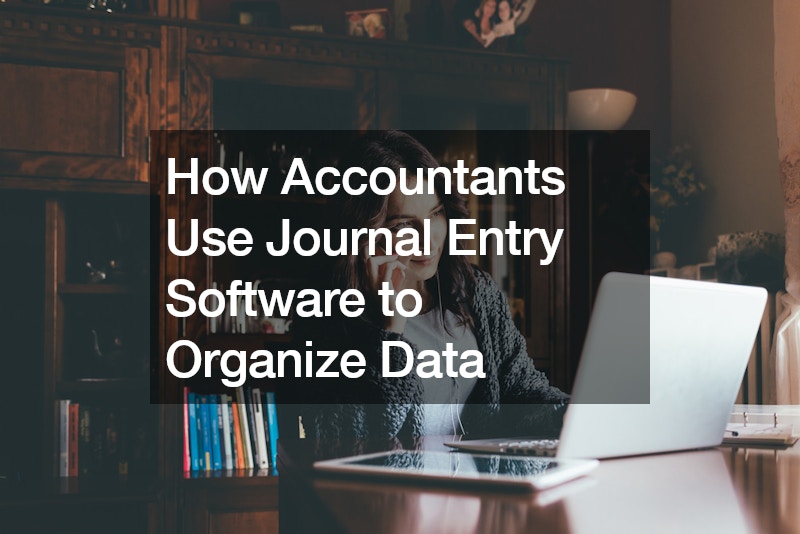In the world of accounting, organization is key. Every financial transaction needs to be accurately recorded, categorized, and stored for future reference. This is where journal entry software comes into play, revolutionizing the way accountants manage data. Let’s dive into how accountants utilize journal entry software to streamline their processes and maintain meticulous records.
What is Journal Entry Software?
Journal entry software is a digital tool designed to help accountants record financial transactions systematically. It simplifies the process of creating, editing, and storing journal entries, which are the building blocks of accounting records. With journal entry software, accountants can efficiently manage large volumes of data, ensuring accuracy and compliance with financial reporting standards.
Organization of Transactions
One of the primary functions of journal entry software is to organize transactions effectively. Accountants can create different journals for various types of transactions, such as sales, purchases, cash transactions, and miscellaneous operations. Each journal serves as a dedicated space to record specific types of transactions, making it easier to track and analyze financial data.
Streamlined Data Entry
Gone are the days of manual journal entry creation. Journal entry software automates the data entry process, reducing the likelihood of errors and saving valuable time for accountants. Instead of inputting each transaction manually, accountants can use predefined templates or import data directly from other sources, such as bank statements or invoices. This streamlines the data entry process and ensures consistency across all journal entries.
Customization Options
One of the key advantages of journal entry software is its customization options. Accountants can tailor the software to meet the specific needs of their organization, creating custom journals, account codes, and transaction categories. This flexibility allows accountants to adapt the software to their unique accounting practices and industry requirements, improving efficiency and accuracy in financial reporting.
Integration with Other Systems
Journal entry software often integrates seamlessly with other accounting systems, such as general ledger software and enterprise resource planning (ERP) systems. This integration allows for the seamless flow of data between different modules, eliminating the need for manual data entry and reconciliation. By connecting journal entry software with other systems, accountants can ensure data consistency and accuracy across the entire accounting process.
Enhanced Reporting Capabilities
With journal entry software, accountants can generate comprehensive reports at the click of a button. Whether it’s balance sheets, income statements, or cash flow statements, the software provides accountants with real-time insights into their organization’s financial health. These reports can be customized to meet specific reporting requirements, providing stakeholders with accurate and actionable information for decision-making.
Audit Trail and Compliance
Journal entry software maintains a detailed audit trail of all financial transactions, providing a complete record of who created, modified, or approved each entry. This audit trail enhances transparency and accountability, ensuring compliance with regulatory requirements and internal controls. Accountants can track changes to journal entries over time, facilitating internal audits and external financial reviews.
Remote Access and Collaboration
In today’s digital age, remote access and collaboration are more important than ever. Journal entry software allows accountants to work from anywhere, accessing financial data securely from any device with an internet connection. This enables seamless collaboration between team members, whether they’re in the same office or spread across different locations. Accountants can collaborate in real-time, sharing insights and making informed decisions together.
In the ever-evolving landscape of accounting, journal entry software stands out as a cornerstone of efficiency and accuracy. Its transformative impact on data organization, streamlined processes, and enhanced reporting capabilities cannot be overstated. By leveraging journal entry software, accountants can navigate complex financial landscapes with confidence, ensuring that every transaction is recorded accurately and transparently.
Beyond its technical functionalities, journal entry software embodies a shift towards digitization and automation in accounting practices. It represents a paradigm shift from manual data entry to intelligent automation, freeing up valuable time and resources for accountants to focus on higher-value tasks. With customizable options, seamless integration with other systems, and robust compliance features, journal entry software empowers accountants to adapt to the unique needs of their organizations and industries.
Moreover, journal entry software fosters a culture of collaboration and transparency within accounting teams. Its remote access capabilities enable accountants to work together seamlessly, regardless of geographical barriers. Real-time collaboration facilitates knowledge sharing, decision-making, and problem-solving, ultimately driving organizational success.
As we look to the future of accounting, journal entry software will continue to play a pivotal role in shaping the profession. Its evolution will be guided by emerging technologies, regulatory requirements, and the evolving needs of businesses. Yet, its core mission remains unchanged: to provide accountants with the tools they need to maintain accurate records, ensure compliance, and drive financial performance. By harnessing the power of journal entry software, accountants can navigate the complexities of modern finance with clarity, precision, and confidence.
.

